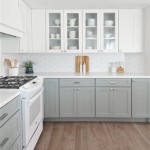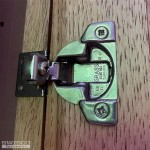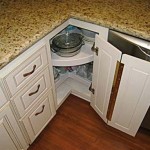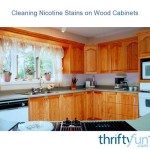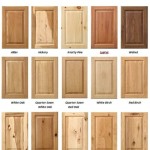Polyurethane Kitchen Cabinets Cleaning: A Comprehensive Guide
Polyurethane kitchen cabinets have become increasingly popular due to their durability, sleek finish, and resistance to moisture and chemicals. Understanding the proper cleaning techniques is crucial to maintaining their aesthetic appeal and extending their lifespan. Improper cleaning can lead to surface damage, discoloration, and even delamination of the polyurethane coating. This article provides a comprehensive guide to effectively and safely clean polyurethane kitchen cabinets, covering everything from routine cleaning to tackling stubborn stains and implementing preventative measures.
Polyurethane is a polymer composed of organic units joined by carbamate (urethane) links. This material is applied as a liquid and then cures to form a hard, durable, and often glossy finish. In kitchen cabinetry, polyurethane coatings provide a protective layer that shields the underlying wood or MDF (Medium-Density Fiberboard) from moisture, grease, and everyday wear and tear. This protective barrier makes polyurethane cabinets relatively easy to clean compared to cabinets with traditional painted or stained finishes.
The frequency of cleaning polyurethane kitchen cabinets depends on usage and the level of exposure to potential contaminants. Cabinets near the stovetop or sink may require more frequent cleaning than those located further away. A general guideline recommends wiping down cabinets with a damp cloth weekly to remove dust and light splatters. A more thorough cleaning should be performed monthly or as needed based on visible dirt accumulation.
Understanding the Importance of Gentle Cleaning Agents
The choice of cleaning agent is paramount when cleaning polyurethane kitchen cabinets. Harsh chemicals, abrasive cleaners, and scouring pads can scratch or dull the finish, compromising the protective layer. It is crucial to opt for gentle, non-abrasive solutions specifically formulated for delicate surfaces. A simple solution of warm water and mild dish soap is often sufficient for routine cleaning.
Avoid using cleaning products containing ammonia, bleach, or strong solvents. These chemicals can react with the polyurethane coating, causing discoloration, streaking, or even peeling. Always test any new cleaning solution on an inconspicuous area of the cabinet before applying it to the entire surface. This precautionary step ensures that the cleaner does not cause any adverse reactions.
For stubborn stains or grease buildup, consider using a specialized cabinet cleaner specifically designed for polyurethane finishes. These cleaners are formulated to effectively dissolve grease and grime without damaging the protective coating. Always follow the manufacturer's instructions carefully when using any commercially available cleaning product.
Homemade cleaning solutions can also be effective and environmentally friendly. A mixture of equal parts white vinegar and water can help remove light grease and grime. However, vinegar is acidic and should be used sparingly and always diluted with water. Another effective solution involves mixing baking soda with water to form a paste, which can be applied to stubborn stains, but again, use caution as baking soda is mildly abrasive.
Step-by-Step Guide to Cleaning Polyurethane Kitchen Cabinets
Following a systematic approach ensures a thorough and effective cleaning process. Prepare the area by removing any items from the countertops near the cabinets. This allows for easier access and prevents cleaning solutions from accidentally splashing onto surrounding surfaces. Protect the floor with a drop cloth or old towels to catch drips.
Begin by dusting the cabinets with a soft cloth or microfiber duster. This removes loose dirt and debris, preventing it from being spread around during the cleaning process. Pay particular attention to corners, crevices, and decorative details where dust tends to accumulate.
Prepare the cleaning solution according to the instructions on the product label or using one of the recommended homemade solutions. Dip a soft, non-abrasive cloth or sponge into the cleaning solution and wring out any excess liquid. The cloth should be damp, not soaking wet. Excess moisture can seep into the seams and joints of the cabinets, causing damage over time.
Gently wipe down the cabinet surfaces in a circular motion. Avoid applying excessive pressure, as this can scratch the finish. For stubborn stains or grease buildup, allow the cleaning solution to dwell on the affected area for a few minutes before wiping it away. Use a clean, damp cloth to rinse the cabinet surfaces, removing any residue from the cleaning solution.
Dry the cabinets thoroughly with a clean, dry cloth. This prevents water spots and helps maintain the shine of the polyurethane finish. Pay particular attention to drying any areas where water may have seeped into seams or joints. Inspect the cabinets for any remaining stains or streaks and repeat the cleaning process as needed.
For cabinets with intricate details or hardware, use a soft-bristled brush, such as an old toothbrush, to gently scrub away any dirt or grime that may have accumulated in these areas. Be careful not to scratch the finish with the brush. After scrubbing, rinse the area with a damp cloth and dry thoroughly.
Preventative Measures for Maintaining Polyurethane Cabinets
Implementing preventative measures can significantly reduce the frequency of cleaning and help maintain the pristine condition of polyurethane kitchen cabinets. Promptly wiping up spills and splatters is crucial. Food spills, grease, and other liquids can stain or damage the finish if left unattended. Use a damp cloth to wipe up spills as soon as they occur.
Avoid placing hot items directly on the cabinet surfaces. The heat can damage the polyurethane coating, causing discoloration or warping. Use trivets or pot holders to protect the cabinets from hot pots, pans, and dishes. Consider using shelf liners to protect the interior of the cabinets from spills and scratches. These liners can be easily removed and cleaned as needed.
Proper ventilation in the kitchen is essential to prevent moisture buildup, which can damage the cabinets over time. Use the range hood when cooking to vent steam and grease away from the cabinets. Consider using a dehumidifier in humid climates to reduce moisture levels in the kitchen. Regularly inspect the cabinets for any signs of damage, such as scratches, chips, or water damage. Addressing these issues promptly can prevent them from escalating into more significant problems.
Applying a furniture polish specifically designed for polyurethane finishes can help protect the cabinets and enhance their shine. Follow the manufacturer's instructions carefully when applying furniture polish. Avoid using polishes that contain silicone, as they can leave a sticky residue that attracts dust and dirt. Dusting the cabinets regularly with a microfiber cloth helps prevent dust and dirt from accumulating, reducing the need for frequent cleaning.
Consider using a sealant specifically designed for polyurethane surfaces. This sealant acts as a protective barrier against moisture, grease, and other contaminants, extending the lifespan of the cabinets and making them easier to clean. Apply the sealant according to the manufacturer's instructions, typically every six months to a year.
Educating household members about proper cabinet care is vital. Encourage them to be mindful of spills, avoid slamming cabinet doors, and use coasters and placemats to protect the surfaces. By implementing these preventative measures, polyurethane kitchen cabinets can maintain their beauty and functionality for years to come.
When dealing with particularly stubborn stains or significant damage, consulting a professional cabinet restorer is advisable. They possess the knowledge and expertise to effectively clean and repair polyurethane cabinets without causing further damage. Attempting to repair significant damage without professional assistance can often worsen the problem and lead to more costly repairs down the line.

What To Use Clean A Polyurethane Finish On Cabinets Hunker

How To Remove Old Polyurethane From Cabinets National Cash Offer We Buy Houses

How To Refresh Kitchen Cabinets Diy

How To Clean Your Kitchen

How To Clean Polyurethane Panels Barron Designs

Degrease Kitchen Cabinets With An All Natural Homemade Cleaner

Low Maintenance Why I Love Polyurethane Kitchens Harrington
I Want To Clean And Disinfect The Interior Of My Kitchen Cabinets Would Using Dawn Antibacterial Followed By A Water Rinse Do So Without Staining Wood Quora
What Are Some Easy Ways To Clean Kitchen Cabinets Quora

How To Design An Easy Clean Kitchen Harrington Kitchens
Related Posts


